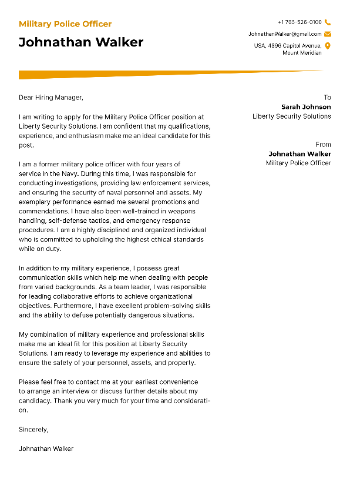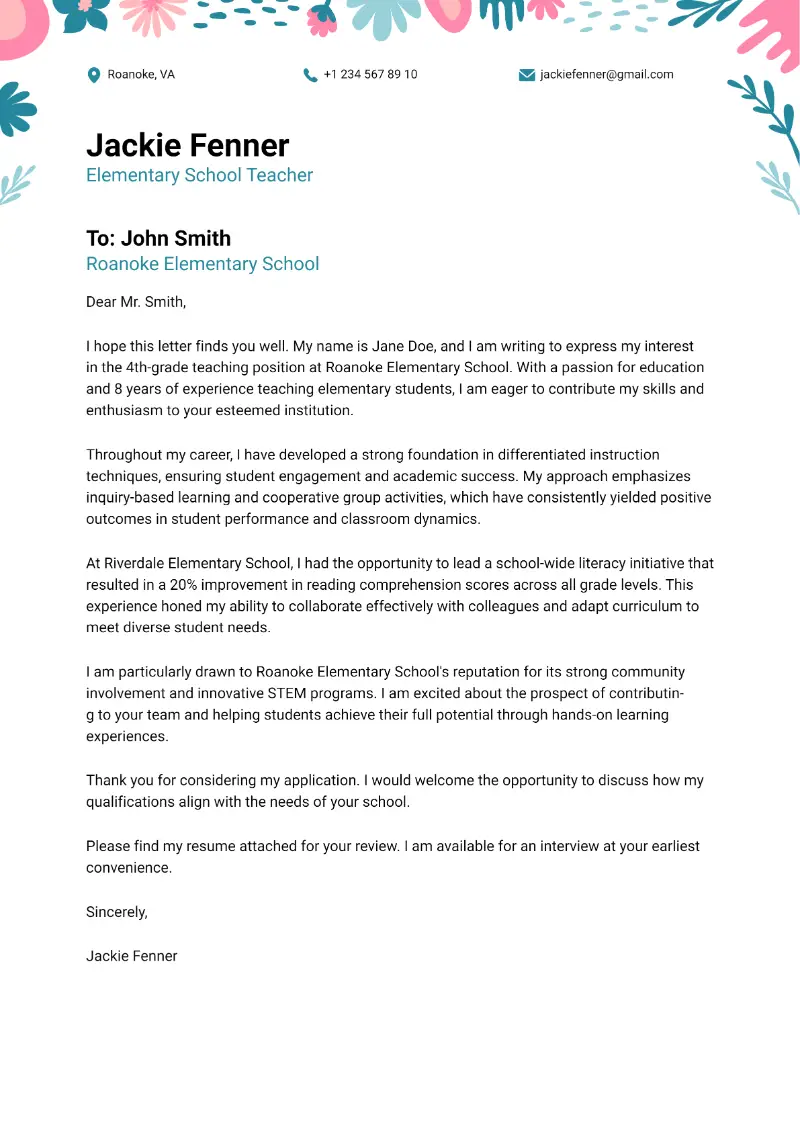In the realm of professional networking and constant job search, first impressions are paramount. One powerful tool for making these initial perceptions is a letter of introduction.
Unlike a resume, an introductory letter provides a unique opportunity to showcase your personality, highlight your key accomplishments, and establish a personal connection with potential employers.
In this article, we'll explore the essential elements of a compelling letter of introduction and provide practical tips to help you create one that leaves a lasting impact.
What is a letter of introduction?
A letter of introduction for a job is a document used to introduce yourself to a potential employer or to introduce someone or something else to an organization.
Unlike a cover letter, which is specifically tied to applying for a known job opening, a letter of introduction can be used to create connections, network, and make employers aware of your skills and interests.
It can also be used to introduce someone else who may be a good fit for a role or opportunity.
Types of introduction letters
When it comes to introductory letters, there are several kinds that serve different purposes.
Most common types of letter of introduction:
- Job introduction letter. When you are pursuing a new career opportunity or seeking an informational interview.
- Networking. When you are looking to expand your professional network or seeking advice and mentorship.
- Business introduction letter. When you are reaching out to new clients or proposing a partnership.
- Introducing a colleague. When you are helping a colleague make a connection for job opportunities, collaboration, or mentorship.
- Referral introduction letter. When a mutual contact has referred someone to you for a job, service, or professional advice.
- Sales overview. When you are aiming to inform potential customers about your offerings.
Preparation process
First of all, gather information about the person or organization you are addressing. This helps personalize your letter and tailor it to their interests or needs.
Then, identify the strengths and experiences relevant to the job. Make a list of your skills, both technical (e.g., software proficiency, project management) and soft (e.g., communication, leadership).
Reflect on past projects or roles where you made significant contributions or achieved notable results.
How to write a letter of introduction?
A typical introduction letter for a job typically follows a standard format to ensure clarity and effectiveness.
Here's a structure of letter of introduction you can follow:
- Sender's information. Start a letter of introduction with your full name and contact information (location, phone number, email). Add your job title or relevant affiliations if applicable.
- Recipient's information. Include the recipient's full name, job title, company name, and location.
- Salutation. Address the person formally (e.g., "Dear Mr. Smith," or "Dear Dr. Johnson,").
- Introduction. Briefly introduce yourself and your purpose for writing. Mention how you obtained the recipient's contact information if relevant.
- Background. Provide a concise background about yourself, your position, and your achievements or qualifications.
- Purpose of introduction. Explain how you believe the recipient and yourself can benefit from the connection.
- Enclosures. If you are enclosing any documents (e.g., resume, brochure), mention them.
- Closing. Express appreciation for the recipient's time and consideration. Sign off your letter of introduction with a formal closing (e.g., "Sincerely," "Best regards,").
Tips for writing an introductory letter
Be concise
Keep your letter of introduction brief and to the point. Avoid unnecessary details or long-winded explanations. Aim for clarity and brevity to maintain the reader’s interest. Your introduction letter should be no longer than one page.
According to TeamStage, networking fills 85% of positions. Most job opportunities are not publicly advertised but shared through personal connections.
Include a call to action
Request a specific action or follow-up. Whether it’s scheduling a meeting or visiting your website, make sure the recipient knows what you would like them to do next.
Proofreading
Before sending your letter, carefully proofread it for any grammatical errors, typos, or awkward phrasing. A well-polished letter reflects professionalism and attention to detail.
Sample introductory letters
Letter of introduction for a teaching job
Don't forget to attach your resume:
Example of letter of introduction for networking
From:
Barbara Childress
3009 Daylene Drive
Westland, MI 48185
barbarachildress@gmail.com
(555) 123-4567
June 18, 2024To:
John Smith
Director of Marketing
Innovative Solutions Inc.
456 Elm Avenue
Chicago, IL 60614Dear Mr. Smith,
I hope this message finds you well. My name is Barbara Childress, and I am currently working as a Marketing Manager at Creative Marketing Agency. I am writing to introduce myself and explore potential networking opportunities with you. I am particularly interested in the innovative marketing strategies employed by your company.
I have been following your work at Innovative Solutions Inc. for some time, and I am particularly impressed with your recent campaign for the EcoSmart product line. Your approach to integrating sustainability and technology in marketing is something I greatly admire. I believe there are several areas where we might find common ground and mutual interest.
In my current role at Creative Marketing Agency, I have been involved in developing and executing comprehensive marketing plans for various clients. For example, I recently led a team to create a social media strategy for a local nonprofit, which resulted in a 45% increase in online engagement and a 20% increase in donations over three months. This experience has strengthened my skills in digital marketing and content creation, which I am eager to discuss and share with like-minded professionals.
I would be delighted to connect with you and discuss potential collaborations or simply exchange insights on the latest trends in marketing. Whether it’s over a cup of coffee or a brief phone call, I believe that we could exchange valuable insights and potentially collaborate on future endeavors.
Thank you for considering my request. I look forward to the possibility of connecting with you and learning more about your work. Please let me know a convenient time for you, and I will be happy to accommodate.
Best regards,
Barbara Childress
Business letter of introduction example
Letter introducing a colleague
From:
John Davis
Marketing Manager
Bright Marketing Agency
jdavis@brightmarketing.com
555-555-5555
June 18, 2024To:
Emily Garcia
Sales Director
Global Solutions Inc.
egarcia@globalsolutions.com
555-123-4567Dear Emily,
I am writing to introduce my esteemed colleague, Mark Taylor, who recently joined our team at Bright Marketing Agency. Mark will be taking on the role of Senior Digital Strategist. I believe his expertise and experience will be a valuable asset to your team as well.
Mark comes to us with an impressive background in digital marketing, having worked with Spark Digital Solutions for seven years. During his tenure at Spark Digital, he successfully led campaigns for several Fortune 500 clients, achieving a 40% increase in online engagement and a 25% boost in lead generation.
One of the key reasons I am confident in introducing Mark is his dedication to data-driven strategies and client success. For instance, in his previous role, he spearheaded a digital transformation project that integrated AI-driven analytics, resulting in a 30% improvement in ROI for a major client.
Beyond his professional skills, Mark is known for his strategic mindset, excellent client relationship management, and innovative approach to problem-solving. I am certain that he will bring a wealth of insights and creativity to any campaign or project you may collaborate on.
I encourage you to reach out to Mark directly at mtaylor@brightmarketing.com or 555-678-9012 to discuss how he can support your current and future marketing initiatives. I am confident that you will find Mark to be a dedicated and resourceful professional.
Thank you for taking the time to welcome Mark. Please feel free to contact me if you have any questions or need further information.
Best regards,
John Davis
Sales letter of introduction sample
Army letter of introduction example
From:
Robert Cooper
4889 O Conner Street
Pascagoula, MS 39567
(555) 123-4567
June 18, 2024To:
Commanding Officer
1st Infantry Division
Fort Independence
Lake Charles, LA 70601Colonel Johnson,
I hope this letter finds you well. My name is Robert Cooper, and I am writing to introduce myself as a new recruit to your esteemed unit at Fort Independence. I have recently enlisted in the United States Army, and I am eager to begin my service under your command.
I come to the Army with a strong dedication to serving my country. My background that includes four years in law enforcement, specializing in crisis management and tactical operations.
I am committed to upholding the values and standards of the Army. I am enthusiastic about the opportunity to contribute to the mission of the 1st Infantry Division. I look forward to meeting you and my fellow soldiers in person and to learning from the leadership and expertise within the unit.
Please let me know if there are any preparations or additional information required before my official reporting date on July 1, 2024. I am fully prepared to undergo any necessary training and to integrate seamlessly into the unit.
Thank you for considering my introduction, and I am honored to be joining the 1st Infantry Division. I am eager to begin this new chapter of my career in service to our country.
Respectfully yours,
Robert Cooper
Letter of introduction sample for a client
Create your professional Resume in 10 minutes for FREE
Build My Resume
Follow-up after sending an introduction letter
Once you've sent your letter of introduction, following up is essential to ensure your message has been received and to reinforce your intent.
- If you’ve sent your letter via email, wait 3–5 business days before following up. This gives the recipient enough time to review your letter and respond if they choose to.
- If sent by traditional mail, allow a little more time, typically 7–10 business days. It depends on delivery speed and the recipient's workload.
Email is often the most appropriate and least intrusive way to follow up. It's professional, allows for written documentation, and gives the recipient time to respond at their convenience.
However, if your letter involves something more urgent or requires direct communication (such as a job referral), a phone call may be a better option. Ensure it's at an appropriate time to avoid interrupting the recipient’s schedule.
Be concise and polite. Simply mention that you are following up on your previous letter and inquire if they had a chance to review it.
Conclusion
By presenting yourself in a personable yet professional manner, you not only highlight your qualifications but also demonstrate your enthusiasm and initiative.
With careful attention to detail and a genuine tone, your letter of introduction can open doors to new professional opportunities. Keep in mind that every letter you send brings you one step closer to achieving your career goals.
FAQ
- How do I follow up after sending an introductory letter?
- Give the recipient some time to respond, then consider a polite follow-up email if you haven't heard back.
- Can I send a letter of introduction via email?
- Yes, it's common to send it as an attachment or in the body of the email itself.
- Should I send a physical copy?
- In certain professional settings and cultures, physical letters are still considered more formal and respectful.
- What if I don't know much about the recipient?
- Do some research to personalize the introduction letter as much as possible, or keep it more general if information is limited.
- What if I receive a letter of introduction? How should I respond?
- Begin your answer by acknowledging that you have received the letter. Express enthusiasm in further conversation or meeting up, if you're interested. If not, diplomatically communicate that you currently do not have the capacity to pursue further interaction. You can also suggest alternative contacts or resources.






















